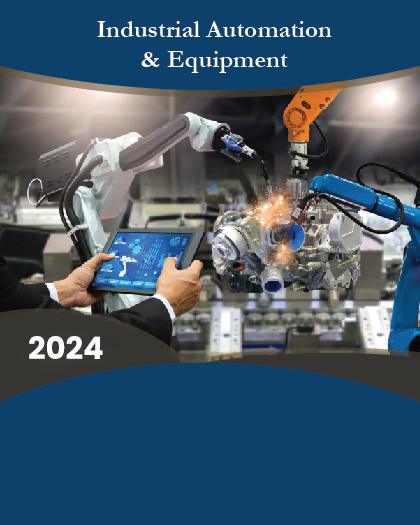

Compared with traditional industrial robotics, collaborative robots (cobots or co-bots) are smaller, smarter, more affordable, use-friendly and flexible automatic solutions for industrial manufacture. Cobots have tapped in electrical & electronics industry and the applications are always expanding. Driven by global competition and the rising consumption of electronic products, collaborative robots market in electrical & electronics industry is expect to witness a phenomenal growth, with annual shipment and sales revenue from hardware and software growing at over 42% annually through 2022. An increasing number of electrical & electronics makers include SMEs are deploying more industrial cobots to assist human workforce in their workshops.
Global Collaborative Robots Market in Electrical & Electronics Industry 2016-2022 by End-user, Application and Region examines the global cobot market in electrical & electronics industry through a comprehensive summary and analysis of premium information sources. On the basis of reviewing global economic environments and trends of electrical & electronics production, this report provides an in-depth and detailed analysis of market structure, market trends, market forces, and market segments (by end-user, by application, and by region). In most analysis, historical statistics together with market outlook cover the 2014-2022 period in terms of unit shipment as well as sales revenue generated from hardware and software of industrial cobots in electrical & electronics industry. The report also includes current competitive scenario and profiles of major vendors/players.
Qualitative market analyses include identification and discussion of market structure, market overview, growth drivers, restraints and challenges, emerging market trends/opportunities, Porter’s Fiver Forces as well as M&A landscape and fundraising trend.
On basis of end-user, the market include electrical & electronics sub-sectors such as electronic components production, telecommunication devices production, electrical & electronics equipment manufacture and other sectors. Electronic components production has been so far attracting the majority of new installations, and will continue to do so over the years to come.
On basis of application, the market is segmented into material handling, assembling, and inspection among others. Material handling represents the largest application among all the usage of collaborative robots in electrical & electronics industry.
Geographically, the global market is segmented into North America, Europe, Asia-Pacific region, Latin America and the rest of world (RoW). Specific analysis and forecast over 2014-2022 have been covered for important national markets such as U.S., China, Japan, Germany, South Korea, and Mexico. APAC region leads the global industrial cobots market in electrical & electronics industry in terms of sales volume as well as annual revenue, followed by Europe and North America. Strongest growth potential also exists in the vast APAC market in the future with China and Southeast Asian countries expected to be the main driving engines for the growth.
The major challenges for collaborative robots market in electrical & electronics industry are safety concerns, technological difficulty of improving payload capacity & speed of cobots, and low penetration rates of industrial cobots.
Highlighted by 4 tables and 89 figures, this 172-page report saves clients a lot of time on researching global market, and provides valuable information and a thorough understanding of the market’s emerging trends, which are needed to successfully derive critical business decisions, identify and expand business opportunities in the global industry.
Key Players:






















